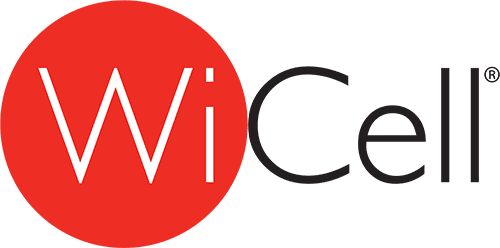SINGLE NUCLEOTIDE POLYMORPHISM (SNP)
WHAT IS SNP MICROARRAY?
SNP microarray is the hybridization of fragmented single-stranded DNA to arrays containing hundreds of thousands of unique nucleotide probe sequences. Each probe is designed to bind to a target DNA subsequence.
Specialized equipment is then used to produce a measure of the signal intensity associated with each probe and its target after hybridization. The signal intensity depends upon the amount of target DNA in the sample, as well as the affinity between target and probe. Extensive processing and analysis of these raw intensity measures yield SNP genotype inferences1.
SNP data can be used to detect subtle constitutional imbalances, loss of heterozygosity (LOH), and copy number changes at a resolution of individual exons2.
WiCell currently utilizes the Infinium Global Diversity microarray from Illumina (Illumina™ Infinium SNP microarrays). Samples are then analyzed using BioDiscovery NxClinical software and compared to a diverse set of more than 100 samples from the HapMap populations. All results are reviewed by an American Board of Medical Genetics and Genomics (ABMGG) board certified or board eligible director.
WHAT IT DETECTS:
- Genomic gains and losses
- Copy number variants (CNVs)
- Duplications/deletions
- Unbalanced translocations
- Aneuploidies
-
Copy neutral aberrations Loss of heterozygosity (LOH) / Absence of heterozygosity (AOH)
-
>20% mosaicism (for example: cultures where >1 of 5 cells is trisomy 12)
WHAT IT DOESN'T DETECT:
- Balanced translocations
- Robertsonian
- Balanced insertions
- Inversions
- <20% culture mosaicism (for example: cultures where 1 of 5 cells is trisomy 12
- Chromosomal position of genomic gains
WHEN TO USE:
-
As a baseline genomic screen
- To detect LOH (Loss of Heterozygosity) / Absence of heterozygosity (AOH)
- To detect submicroscopic (<5Mb) abnormalities
- To identify amplified or deleted genes of interest In conjunction with g-banded karyotyping
- To define translocation breakpoints
-
For cell line genotyping
-
For research of genomic copy number change
INTERPRETING YOUR RESULTS:
When testing is completed you will be provided with a Microarray Analysis Report. Please see our sample Microarray Analysis Report for help to interpret your results.
REFERENCES:
1. LaFramboise, T. (1 July 2009). "Single nucleotide polymorphism arrays: a decade of biological, computational and technological advances". Nucleic Acids Research. 37 (13): 4181–4193.
2. Arsham, M. S., Barch, M. J., & Lawce, H. J. (Eds.) (2017). The AGT Cytogenetics Laboratory Manual (4th Ed.). Hoboken, NJ: John Wiley & Sons, Inc.
2. Arsham, M. S., Barch, M. J., & Lawce, H. J. (Eds.) (2017). The AGT Cytogenetics Laboratory Manual (4th Ed.). Hoboken, NJ: John Wiley & Sons, Inc.
